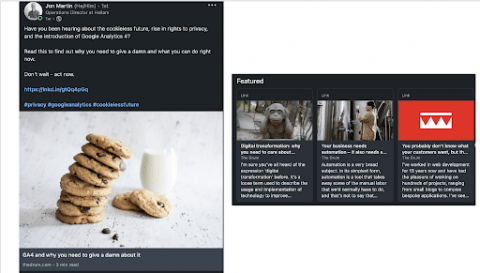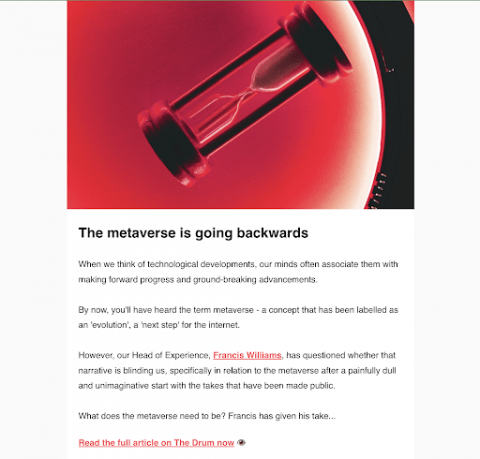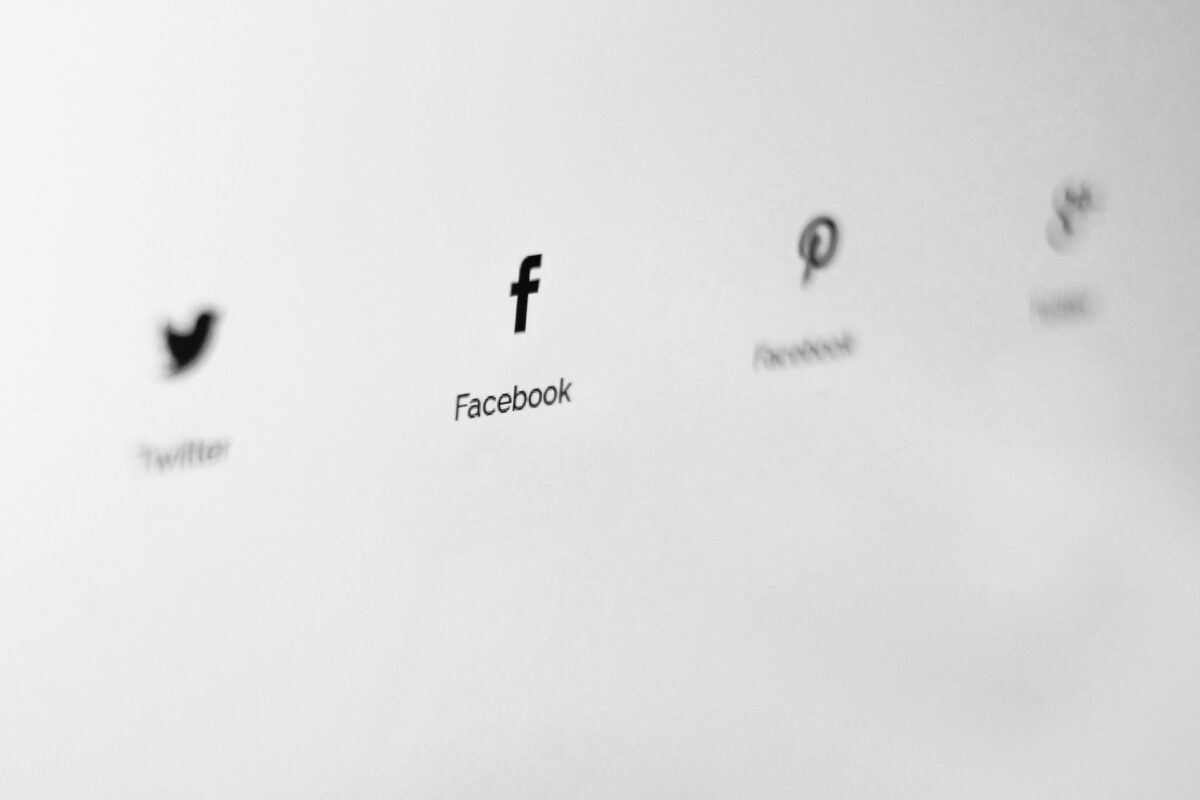Picture this: you’ve created a great article and outreached it to a top tier publication. The publication tells you they love it and upload it straight to their website and link back to your website.
You upload that juicy piece of media coverage straight to your tracker, feeling chuffed at a job well done… but what if we told you your job isn’t over?
The truth is that landing that piece of quality coverage is just the first part of the job. Once you have it, part two kicks in: amplification.
You haven’t worked so hard to get that piece of coverage just for it to sit in a tracker. It deserves to be amplified, made to work as hard as possible, just like any other piece of content, to make sure as many people see and engage with it as possible.
Here are our top ten amplification tactics you can use to get your media coverage in front of as many eyeballs as possible.
1. Promoting via social media
The first channel we all turn to when we think of amplifying a piece of content – written or video – more often than not is social media and this shouldn’t be any different when it comes to that piece of coverage you have secured.
PR is a brilliant way of telling the brand’s story, sharing its successes, what it stands for and where it stands within the industry it operates in. Sharing that coverage is another opportunity to drive engagement with your network and followers.
Below is a great example of Patagonia, the outdoor clothing retailer, sharing a piece of coverage secured in the New York Times across its LinkedIn channel. At the time of writing, this was one of the brand’s best-performing posts, which amplified a great news story directly to their huge social audience.
2. Leveraging employee advocacy for even better results
Amplifying via a brand’s social media is great alone, but implementing an employee advocacy strategy will make your results even greater.
In its simplest form, employee advocacy is the promotion of a business by the people that work within it by telling their own authentic, personal stories and experiences.
A brand’s biggest cheerleader is its invested employees and by getting them to share your media coverage, you’re expanding the number of people that are seeing the story – possibly to an audience that was previously unfamiliar with your brand and what you do.
All social tools are useful for employee advocacy but looking at LinkedIn specifically, that platform has a ‘featured’ location where employees can link directly to articles about the brand or to others that they have written themselves, ensuring they remain in view of people visiting their page.
Below is a great example of this by our very own Operations Director, Jon Martin.
3. Engage with those who are talking about you as a result
We’ve talked about employee advocacy above but the thing about good news stories is that they are likely to get other people talking about it, too – including those outside your circle.
If you see someone has shared your story through socials, take the time to thank them or share their post with new commentary.
While there is the benefit of keeping the story alive a little while longer (engaging with their comment or share keeps it ‘alive’ in other followers’ feeds) this simple step projects your brand as one that likes to engage with its audience and helps as part of any strategy to inject personalisation into the marketing approach.
4. Sharing news coverage directly via email marketing
Email marketing is a brilliant platform for a number of reasons, with many brands using it as a primary tool for Organic conversion.
However, when thinking about brand awareness, it is, quite possibly, the leading asset for getting news in front of your direct audience.
The latest statistics for email marketing are quite staggering. According to HubSpot, 99% of consumers will open their emails at least once a day, with many of those also reviewing their personal emails multiple times over the course of a day.
So, for that audience that is particularly invested in your brand, does it not make sense to get a positive news story or article in front of them in the form of a newsletter?
By doing so, you’re contributing to both your brand awareness and conversion-based marketing tactics.
When our Head of Experience, Francis Williams, had an article commissioned by The Drum, we made sure to share it in our weekly newsletter:

5. Find ways to repurpose coverage with Reactive PR
This isn’t something that will work for every piece of PR but for content like thought leadership, Reactive PR can be a treasure trove of opportunity.
Thought leadership PR comes in the shape of expressive, long-form articles that demonstrate an individual’s expertise in a particular area or field. Providing the article is relevant to the industry and time it is being written for, those thoughts can often be repackaged for other opportunities.
Journalists are always looking for comments and expertise to support the articles they are working on and by using tools like Response Source or by searching #JournoRequest on Twitter, you may well spot an opportunity that your already-approved content is a good fit for – giving you the edge on competitors who may be scrambling around trying to cobble a response together.
The art of Reactive PR is, ironically, proactivity. It’s about thinking ahead to what journalists are going to be covering in your industry and having content ready for it.
Because even when you have landed that first great piece of coverage – a reward for being on the beat – it is more than likely you will be able to reuse it again and again to generate more coverage and links.
6. Include an ‘As Featured In’ section on your website
Particularly when it comes to product PR, including an ‘as featured in’ section on the page will add further credibility and weight to it.
Essentially, they act as further reference points, especially for customers that are perhaps looking for further information or reviews.
If you’ve got a great story or review from a recognisable publication, slap that logo on your website and keep on top of it as your pool of coverage secured across different publications that matter to your audience grows.
7. Target specific audiences through Paid tactics
You probably didn’t expect to see this one here, did you?
Usually PR and Paid Media very rarely come into contact and are often utilised as part of siloed activity. However, by joining forces, you can create a targeted approach using meaningful content.
The targeting tools available today mean we, as marketers, have a wealth of consumer data at our fingertips. Quite often, we use that data to push data-led conversion campaigns.
But imagine, for a moment, flipping that on its head and using those same tactics to push a quality piece of coverage as part of your brand awareness goals, getting your story seen by as many eyes as possible on a small budget.
8. Share your story internally
Your employees are your biggest cheerleaders. Sharing positive news-related stories helps when building a company culture and a feel-good factor. Let’s be honest – you wouldn’t be happy if the company you were working for was constantly in the news for all the wrong reasons, would you?
Embrace that good news story and let your colleagues bask in the glory, too, be it via an internal newsletter or by more modern business communication tools, like Slack.
And if they happen to take it one step further and talk about it on their own social media channels? Well, that’s a bonus.
9. Link to it in upcoming blogs…
If the opportunity arises, make sure you’re linking to your piece of coverage in an upcoming blog post.
Utilising links is a crucial part of digital marketing and by including them, you’re actively trying to guide the reader to the story that they may have previously missed.
This SEO tactic has grown over time, with journalists and publishers also appreciating ‘follow links’ which not only help their own backlink profile but also support them with their engagement statistics.
10. … but make sure you’re receiving a link back as well
Getting online media links to your website is a key part of an SEO strategy and for search engine optimisation. Over time, acquiring these links will improve your own business’ website domain authority (DA) or domain rating (DR) which, in turn, will help your content rank and prosper over your competitors’.
This, typically, is where Digital PR professionals come into the mix.
However, in order to capitalise on this, you must understand the value of links and capture the opportunities press mentions give you. If you get a brand mention and no link, just ask for one. The worst answers you will get are either a ‘no’ or ‘you can but it’ll cost you.’ If it’s the latter, the choice is yours but we’d advise against paying for links unless it’s a truly great opportunity for your business in a publication that matters to your audience.
As the saying goes, if you don’t ask, you don’t get!
Can we help you with your amplification strategy?
Getting that coverage is just the first step. But the results and the rewards can be far greater if you have an integrated amplification strategy in place.
Want to hear how our Content Marketing and PR specialists can help your business? Get in touch here.





